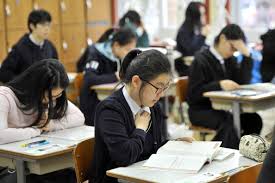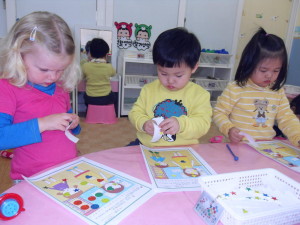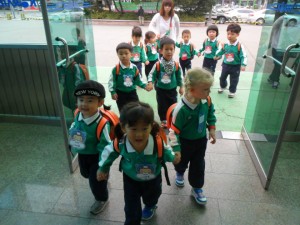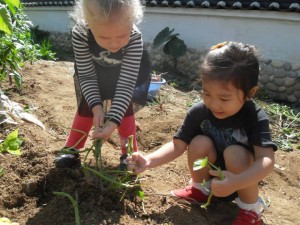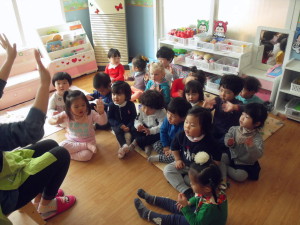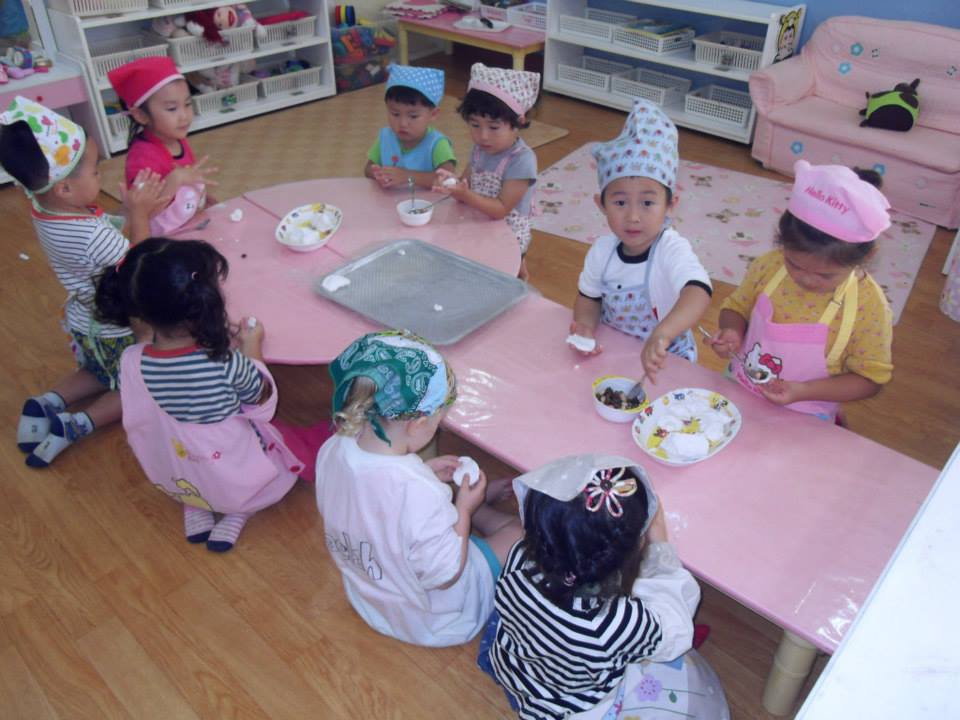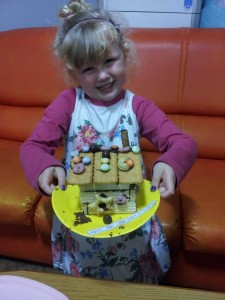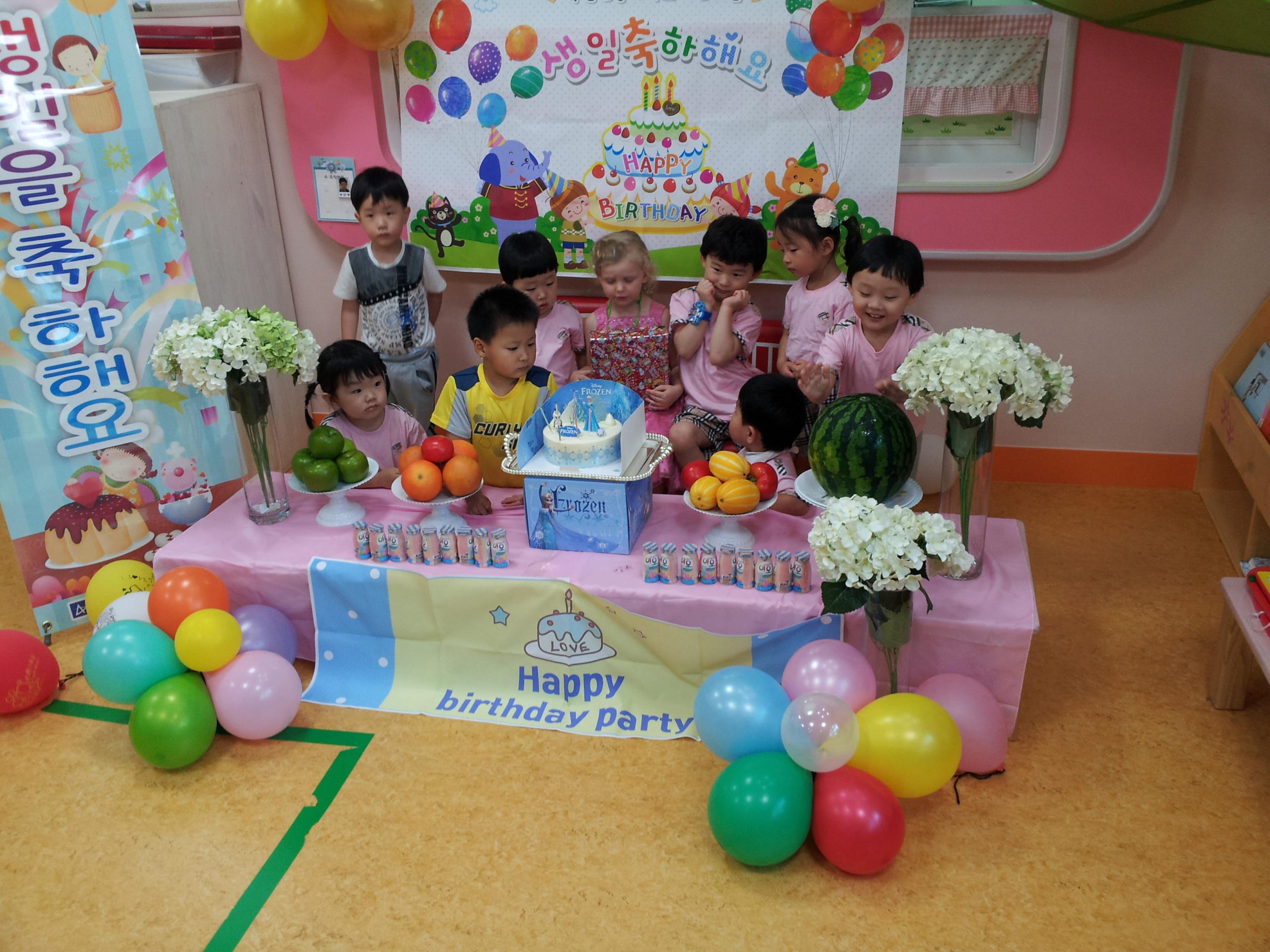
Korean Kindergarten gets it right
Fellow blogger Kathryn Godfrey recently wrote about the punishing Korean school system. The amount of gruelling hours that Korean teenagers (and even elementary school children) spend studying seems cruel and often pointless. Korea may produce students with amazingly high grades, but even these children seem to lack a confidence in their personal opinions and creative thought, relying on rote answers and vast ‘book knowledge’ to make their mark.
Obviously, not all Korean students are robots, and there must be a great deal of innovative thought in university graduates as displayed by Korea being in the forefront of modern technology. However, one cannot ignore the fact that Korean students are worked too hard, and, according to World Education News and Reviews, Korean policymakers recognise that the system “failing to maximize the effort being put in by its students and teachers”.
As the Korean school year starts, the question comes to my mind again: when does the school system become so awful? Because it isn’t always so.
One just has to take a look into any Korean kindergarten to see that the schooling system, for children of that age, is superb.
At a glance, Korean kindergarten is very structured and full of paperwork; like the rest of the Korean schooling system, there are certain boxes that need to be checked. Yet it is all for the benefit of the children and to very clearly show the parents what it is their child is getting out of school each day.
At the start of the school year the parents are provided with a handbook that not only explains the schedule of fees and school rules, but also provides a weekly schedule for the entire year. The schedule shows how the school’s activities have been carefully selected to provide the best educational and developmental program for the children.
Each week a newsletter goes out with the plan for the following week: what the theme will be, which songs they will learn and books they will read, what the art-work project for the week will be, etc. The plan is laid-out according to day of the week and skill that is being developed.
It all sounds very rigid, as though the pressure for kids to perform is starting even here. However, the reality of all this paperwork is that the kids learn and explore and create while having tremendous amount of fun.
Since 2009, Korean kindergartens have, by law, adopted an approach that “pursues whole-person development and happiness in young children” as well as “develops the autonomy and creativity of young children”. This approach is in-line with the internationally recognised Montessori method of teaching. This means there are a range of activities laid out on child-high shelves, and while the teacher usual introduces and leads an activity, the children are then encouraged to continue where their will takes them.
IMG_0418For example, the teacher might lay out three different types of material, let the children feel each one, and then start a discussion on what they think each is used for. The children may then go on to try make things out of the material, or simply play with the material, imaging, let’s say, that the piece of blue silk is a river. Later they may read a book about the different materials, or play with the things they made, or sing a song about their use. So the kids are creating and playing and singing, all the while learning something “useful”.
All Korean kindergartens have a comfy school uniform, usually to be worn on excursion days, and days that the kids get up to something sporty, like “exercise class”. Excursions range from visits to aquariums, to train-rides, to theatre performances, to nature walks during which all manner of plant and (tiny) animal life may be collected. The collection is then observed in the classroom – a simple walk turned into a biology lesson! Exercise class involves hoola-hooping and crawling through material tunnels and jumping on a trampoline. In other words, playing.
A lot of the play is guided, to give children the maximum learning benefit, while still allowing the kids to have fun. Water-painting, leaf-collecting, plant-growing, cooking and going to the local supermarket are all part of every Korean kindergarten’s program.
Literacy is another big part of the Korean pre-school system. Some kindergartens are more geared towards book-learning than others, and you do get the schools that force kids as young as 4 to sit and “study” from a book. Most kindergartens, though, seem to manage to get their youngsters reading and writing before they begin elementary school without this rigid structure.
The students learn by being read to a lot! There are numerous story books that on closer inspection are essentially phonics books, and books that promote literacy. The stories and pictures are so age appropriate, that the children start to learn their letters without even realising it, because they are so engaged with the story, and often the songs and tracing activities that go with it.
Aside from all the fantastic fun that Korean kindergartners experience, the system is also so great due to the parent involvement. Each child has a little diary that the teacher writes a note in every day. The note can be as simple as “Yu-mi really enjoyed the strawberries we had for morning snack,” to a full account of the ups and downs the child encountered that day. On top of that, each kindergarten I have encountered in Korea has a website (quite often a Daum Cafe site) on which they share photos and videos each week, and where parents and teachers can comment and chat on an open forum.
Furthermore, parents are encouraged to look-in on a class, or help out where they feel their skills apply. My daughter’s playschool had one parent give Chinese lessons once a week, while another parent spent a morning at school showing the kids how to make a gingerbread house.
And it’s not just parents. The whole family often gets involved in the Korean kindergarten calendar: aside from Chuseok activities, Sport’s Day and the Graduation concert, families are also asked to join the children on a picnic in spring and fall. The picnics usually take place at a museum or educational centre that host activities geared towards kids. At my child’s spring picnic, each child’s family joined in a welcome dance, made leaf-stained handkerchiefs, and had a parent-child race, the object of which was to put out a fake fire using a toy fire extinguisher (once again combining the fun with the learning).
The cherry on the cake of this amazing kindergarten system, is that for Korean citizens, it is free. A small fee to cover the extra activities, such as exercise and music class, is sometimes required, but the basic monthly fee, which covers all excursions, materials used in the classroom, and food (two snacks and lunch), is paid for by the government. This is clearly an incentive to have kids, a move to combat the negative birth rate in Korea.
The youth of Korea is considered precious and nurturing their development is of the utmost importance. The kindergarten system is evidence of this ideology. Korean children are well educated, enormously loved, and tremendously happy.
So my questions remains: when, and why, does nurturing the youth to realise their full potential in a fun way turn into pushing the youth to perform their best in such an unreasonable, stressful, draining way?

